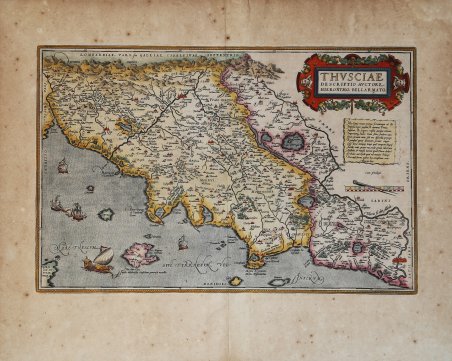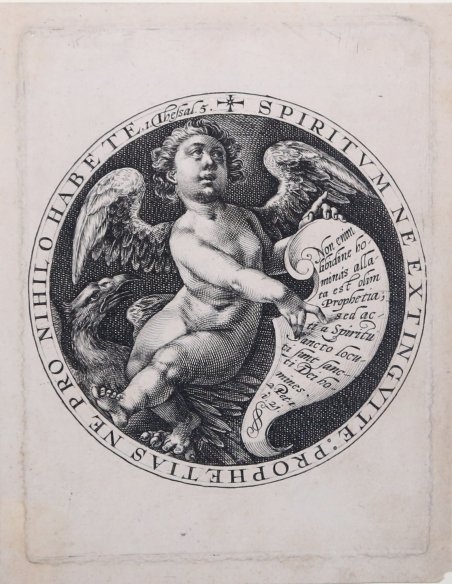Dettagli
Anno di pubblicazione
1570
Incisori
ORTELIUS Abraham
Descrizione
M. Van den Broecke "Ortelius Atlas Maps" (2011), n. 130.
Descrizione
Decorative e dettagliata mappa della Toscana, dall'edizione francese del 1598 del Theatrum Orbis Terrarum di Ortelius, il primo atlante moderno del mondo. La mappa si basa sulla mappa regionale di Girolamo Bellarmati (Bellarmato) ed include un cartiglio ornato e un numero di navi a vela. Carta tratta dal ' Theatrum Orbis Terrarum ' e che è considerato il primo vero “atlante” moderno. L’opera fu pubblicata in 7 lingue e 36 edizioni, per il quale – nel 1570 - Ortelius ottenne il ' privilegio, ovvero una sorta di diritto d'autore che impediva ad altri cartografi di pubblicare i propri lavori. Il ' Theatrum ' rappresentava il lavoro più avanzato del lavoro della descrizione cartografica. L’Ortelius vi raccolse il sapere geografico e cartografico del suo tempo, proponendo in 147 spettacolari tavole incise l’immagine più fedele del mondo allora conosciuto e, in alcune straordinarie “carte storiche”, regioni e itinerari tratti dalla letteratura, dalla mitologia, dalla tradizione. Ortelius fu anche il primo a citare le fonti, menzionando i nomi dei cartografi nel “catalogus auctorum”. Dal 1598 al 1612 le edizioni postume del ' Theatrum ' furono realizzate dal suo collaboratore Johannes Baptiste Vrients. Incisione in rame, eccellente coloritura coeva, in ottimo stato di conservazione. Decorative and detailed map of Tuscany, from the 1598 French edition of Ortelius' Theatrum Orbis Terrarum, the first modern atlas of the world. The map is based upon the regonal map of Girolamo Bellarmati. Includes an ornate cartouche and a number of sailing vessels. Centered on Florence, with Rome in the lower right corner. Map taken from the ' Theatrum Orbis Terrarum, which is considered the first true modern "Atlas". The work was published in 7 languages and 36 editions, for which - in 1570 - Ortelius obtained the privilege, a kind of copyright that prevented other cartographers from publishing his works. The ' Theatrum ' represented the most advanced work of cartographic description. Ortelius collected in it the geographical and cartographic knowledge of his time, proposing in 147 spectacular engraved plates the most faithful image of the world then known and, in some extraordinary "historical maps", regions and routes taken from literature, mythology, tradition. Ortelius was also the first to cite sources, mentioning the names of cartographers in the "catalogus auctorum". From 1598 to 1612 the posthumous editions of the ' Theatrum ' were made by his collaborator Johannes Baptiste Vrients. Copper engraving, contemporary coloring, in good condition. Cfr. M. Van den Broecke "Ortelius Atlas Maps" (2011), n. 130.


Scopri come utilizzare
Scopri come utilizzare

